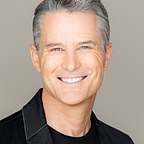Purpose at Work: How the Tesla Model 3 Is Driving Humanity Forward
Elon Musk is on a mission to bring sustainable transportation to the masses. In 2006, the visionary outlined his goal and how he’d get there. He planned to launch an electric luxury automobile brand, then use the funds from car sales to make a lower priced model. He then planned on doing it again to make an even less expensive vehicle. Thirteen years later, Tesla has released the $35,000 Model 3.
The Model 3 standard edition comes with a range of 220 miles per charge. Range extensions and more luxurious interiors are also available in premium versions. The $35,000 price point is a landmark for Tesla. Its previous models were prohibitively expensive for the American middle class. The more affordable price is critical to Musk’s mission to scale adoption of electric personalized transit across the globe.
Musk’s latest accomplishment comes at a cost. To meet the lower price point, Tesla is shifting its sales strategy. The company is transitioning to purely online sales. In turn, Tesla is closing most of its storefronts and laying off sales representatives. Musk also refused to comment on profit margins from the Model 3. While Tesla is experiencing growing pains, the long term prospects are strong. Musk’s purposeful leadership has inspired stakeholders from all walks of life.
When Tesla announced the Model 3 in 2016 over 275,000 people reserved cars without even seeing the physical automobile. What’s more, Tesla’s won the trust of investors, who’ve consistently been trading the stock with a Price to Earnings ratio of 0 since 2009. Tesla has also sparked the competition to invest in affordable long range electric vehicles. While competition may put pressure on the company now, it builds market demand. Tesla has carved out a competitive advantage by being the first mover in the space.
Here are the top lessons from Tesla on how to use your brand to build a better world
Plan with purpose:
As Dave Ramsey said, “a goal without a plan is just a dream.” To marry purpose with profit you must combine your mission with your business plans. Tesla started with its mission first. Now the company is leveraging its core business to create a sustainable transportation network. The plan that Musk outlined years ago has not only guided the company’s business strategy, but also led its purposeful actions.
Tesla needed partnerships to fulfill its mission to democratize sustainable transportation. Tesla has deployed over 12,000 charging stations throughout the country. This step is critical to scaling both business growth and impact. The plethora of charging stations reduces consumer range anxiety. It’s also building an infrastructure for widespread electric vehicle adoption.
Another example of purposeful planning is Musk’s partnership with Panasonic, the tech company that makes Tesla’s batteries. By planning for mass energy storage, Tesla is able to improve battery technology and reduce production costs. Not only do these advancements contribute to Tesla’s core business, they also support its long term mission.
Build a movement:
Brands that build movements gain earned media, consumer advocacy and amplify brand image. More importantly, brand fueled movements push society towards purposeful development. Governments and nonprofits often don’t have the agility or resources to tackle today’s most pressing problems. The world needs corporations to invest in purpose. By utilizing your company to tackle global challenges you can connect with networks that span beyond your brand and industry.
Elon Musk has effectively built a movement around Tesla. A key component of movement building is inspiring others to work with you towards a common goal. You must invite stakeholders from the public, nonprofit and private sector to help move your mission forward. In the interest of the movement, Tesla liberalized its patents. “Our true competition is not the small trickle of non-Tesla electric cars being produced, but rather the enormous flood of gasoline cars pouring out of the world’s factories every day,” Musk wrote. Musk is welcoming competitors to join his movement. In turn, Tesla is demonstrating leadership in championing sustainable transportation.
Inspire consumer advocacy:
Conscious consumers want to support brands that align with their beliefs. The message of the movement resonates with people and they want to be part of the change. Tesla uses the business as a tool to tackle climate change via transformative technology and futuristic cars. In accordance to Musk’s plan, Tesla established itself as a luxury, zero emissions self driving vehicle with a positive impact.
Wealthy individuals and celebrities proudly showed off their Model S and Model X online and in real life. Media outlets covered Elon Musk’s innovative leadership and Tesla’s groundbreaking milestones. What’s more, consumers that couldn’t afford the original models were inspired by Musk’s vision. Many have dreamed of owning one of the sleek vehicles on the cutting edge of the automobile industry. Tesla’s earned media and word of mouth advertising gained the brand over 5 million social media followers from around the world. In turn, Tesla has deliberately avoided paid media. Not only has the brand inspired consumer advocacy, it has also saved millions of dollars in marketing.
Elon Musk’s purpose driven plan has grown into a movement that has transformed the auto industry. Tesla has gained earned media, consumer goodwill, shareholder confidence and purchases. In turn, stakeholder trust and passion opens doors for Tesla to push boundaries. The Tesla Model 3 is more than a car, it’s a step on the road to democratizing sustainable transportation.
